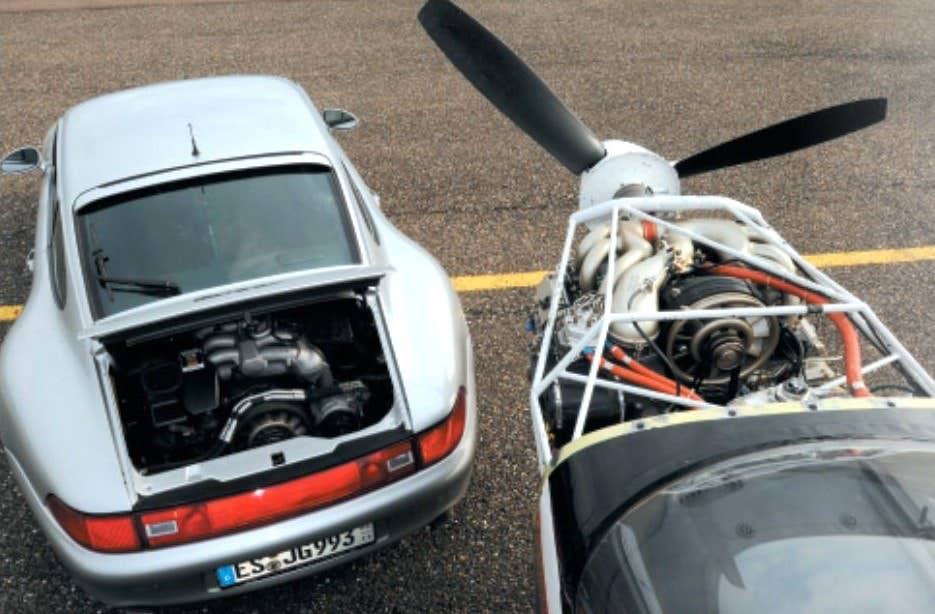Knee Jerking Against The New
I’ve noticed an almost allergic reaction to very idea of electric airplanes. Douglas Adams had a theory about that and it has nothing to do with lithium ion.

Credit: Drive Tribe
Douglas Adams, the noted author of "The Hitchhiker’s Guide to the Galaxy," was a prolific writer whose creative work encompassed essays, books, screenplays and television. I can’t say I’m a devoted fan, but I think I read Hitchhiker some years ago. After his death in 2001, an unfinished novel called the "Salmon of Doubt" was published by his estate. I saw a quote from it recently in an essay attempting to explain our sometimes knee-jerk response to the remorseless march of progress.
“I’ve come up with a set of rules that describe our reactions to technologies,” Adams wrote. "1. Anything that is in the world when you’re born is normal and ordinary and is just a natural part of the way the world works. 2. Anything that’s invented between when you’re fifteen and thirty-five is new and exciting and revolutionary and you can probably get a career in it. 3. Anything invented after you’re thirty-five is against the natural order of things."
Sound at all familiar? Do you see yourself anywhere in the taxonomy of that observation? The quote is quite meme-worthy, but like all memes, it’s a generalization that isn’t universally true if it’s true at all. You almost want to overlay a standard distribution curve on it to see what percentage of which cohort embraces the attitudes described. I invite you to click on the comments addressed at our video on electric airplane air racing to see examples of what I’m talking about and you can then surmise who hews to the Adams hierarchy. Dismissiveness ahead of rational analysis is a disease every bit as virulent as wide-eyed Pollyannaism.
I think I see the thing as inverted. Big heavy cars and radial engines were a thing when I was born, but I no longer swoon over a 1956 Chevy; I make an exception for a Merlin, but it predates me. When I was a young newspaper reporter, I rode around on a couple of Triumph Bonnevilles but I tried a vintage one a few years ago and thought it was a pile of crap. I wondered why I ever liked it. (Because there was nothing else.) The computer arrived when I was in my 30s and I remember wondering what took them so long. And I sort of got a career in the field.
Next up, electric airplanes. And racing electric airplanes. I’ve flown a couple of electric airplanes and my attitude is: Show me more. Not as in more speed, more range or more payload, but more progress. In other words, what the heck is coming next? Although as a journalist, I’m supposed to have (and do have) a skeptical eye, I’m generally not reactionary against anything and can’t recall being especially disposed to searching for reasons why an idea won’t work as opposed to waiting to see if it will. Electric airplane racing might be a commercial black hole, but my imagination tells me it will be an interesting—if quiet—spectacle.
Speaking of black holes, I’m working on a video project at the moment that is, in some ways, an exploration of what it takes to make new ideas succeed in the fundamentally conservative world of aviation. Which is to say some people who participate in it say they want new stuff, but are then reluctant to buy it. Or flat out reject it. The video is an exploration of why new powerplant ideas have so often failed against the almost universal attitude that Lycoming and Continental are industrial dinosaurs without half a new idea between them. Maybe, maybe not, but I would submit the Continental IO-550 (and its variants) as exhibit A for the defense. If you’ve got a better engine idea, beat that one and you’ve got a winner.
In fact, it was the IO-550 that rescued Mooney from the PFM fiasco. If airplanes weren’t in your life then, you may not know that Mooney and Porsche teamed up to put the boxer engine into what became the long-body Mooney. Hell of an engine. Six cylinder, DOHC, electronic ignition, fan cooled and single lever control, fer cryin’ out loud. In 1988! Leg warmers and hair so big it needed its own zip code were in fashion. If they tried this today, I would probably have to restrain myself from being cloyingly enthusiastic about the idea. A Porsche engine!
Yet it flopped. Only 41 lonely buyers emerged before Porsche lost interest—who could blame them?—and got sued for lack of support. Eventually, Porsche paid to have the boxer motors replaced by … yes, the IO-550, which has reigned supreme ever since. It probably failed for lack of a business plan that accommodated low volume and a persistent service network to support owners who would surely run into minor teething pains. Mooney couldn’t figure out how to sell it, Porsche got cold feet on service, the engine wasn’t a stellar performer and the country was headed into a minor recession. I’ll detail other examples in the video, but suffice to say that avionics notwithstanding, pilots can be surprisingly loyal to Adams’ Rule 3.






